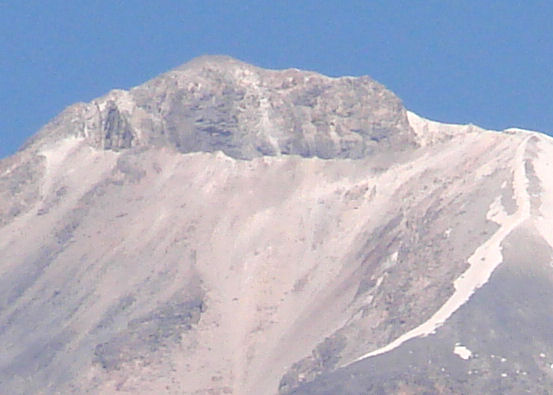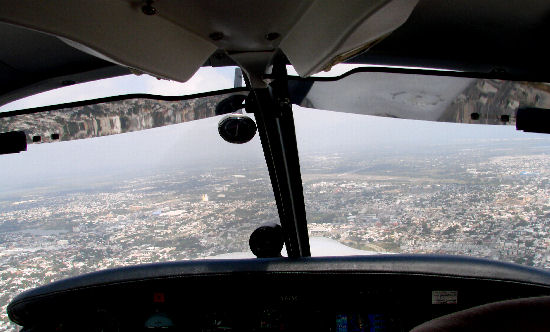
A close look at the cone of Pico de Orizaba More Photos

Tampico Airport at 12:00
|
 A close look at the cone of Pico de Orizaba More Photos
|
MMPS 071300Z 06008KT 15SM SKC 21/17 A3007 RMK SLP167 5//// 907 HZY MMOX 071245Z 34002KT 8SM SKC 09/02 A3023 RMK MMVR 071245Z 27004KT 6SM BKN070 19/16 A3003 RMK 8/030 HZ ISOL CI MMTM 071241Z 12004KT 3SM BR SCT010 21/20 A3003 RMK 8/500 MMMA 071242Z 13014KT 5SM SCT020 21/20 A3000 RMK 8/500 HZYIn the U.S. pilots get their weather briefing by speaking to a weather briefer on the telephone. The briefing includes weather forecasts and a synopsis of the location and movement of the low and high pressure areas, as well as current conditions and reports from other pilots in the air. The weather shorthand displayed above is only the current conditions and harkens back to the days of teletype machines when the baud rate was about 1 or 2 and every character had to count. Today it doesn't make much sense, but no one likes to admit to stupidity so it continues to be the standard format. The people at the National Weather Service and the weather briefers (who are contract workers) know how to interpret this shorthand. They are in the minority. I can understand most of it but it gives me a headache to read it and that is an unsafe condition for piloting an aircraft so I ignore the printout. Compared to the weather in Texas, the weather in Mexico is generally predictable and varies according to wet season/dry season, the time of day, and the geographic location. I expect few clouds and high visibility until reaching the Gulf coast plain where I expect a layer of scattered clouds at around 4000' and some haze below that layer. That is exactly what I get.
I return to the Comandante with my stamped flight plan. We proceed to the plane (via the red line on the tarmac perimeter) and prepare for departure.
The Flight
I call Puerto Escondido Tower and we are cleared for takeoff on runway 9 with a right turnout. We make a wide circle over the town and bay and say goodbye to Puerto Escondido while gaining altitude for the mountain crossing. A few minutes into the flight we reach mountains that we are not high enough to cross. I turn parallel to the mountains and fly close in, picking up ridge lift that doubles our rate of climb and we continue on our way with little delay. We look once again for the roadwork of the new highway to Oaxaca but do not find it. Perhaps it is further to the east. I am able to take a lot of photos in the calm morning air.
30 minutes into the flight we are entering the Oaxaca valley and I contact Oaxaca Tower. It sure is a lot faster than driving, but I enjoy the drive too. We pass the Oaxaca airport 46 minutes into the flight and I take some better photos of Monte Albán.
We reach Pico de Orizaba, the halfway point, and there are still no clouds. When we finish crossing the mountains and enter the coastal plain west of Veracruz, there are scattered clouds. I know to expect fewer clouds at Tampico than where the coastal plain meets the mountains so VFR weather in Tampico is very probable. I am taking frequent photos along the route. I take a photograph of the GPS radio occasionally so that I can better pinpoint the locations where photos are taken.
As we near Poza Rica, I contact Poza Rica Tower on 118.9. Poza Rica is 104 NM SSE of Tampico on the 161° radial and is on our route. I didn't bother with Veracruz because we were well to their west. After passing Poza Rica, they released me from the frequency to contact Tampico Tower.
On the Ground at Tampico
See More Photos
Now on to Brownsville.